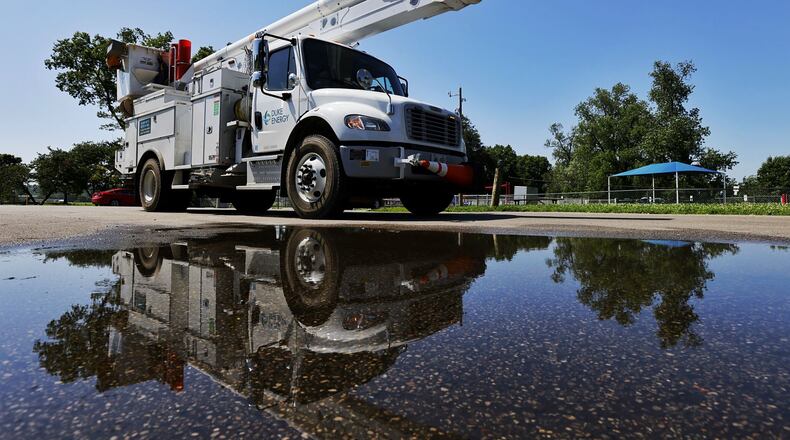Any time a utility provider wants to change its distribution rates, it has to get permission through PUCO. For Duke Energy’s natural gas operations, the company hasn’t requested an update of its distribution rates since 2012.
Now that Duke Energy’s proposal is in, PUCO’s technical staff will look over the relevant data and make its own recommendation of how much the utility provider’s revenue should be allowed to increase.
Public hearings, possible settlements and a final, formal evidentiary hearing are set to follow. Matt Schilling, a spokesperson for PUCO, said folks could expect this rate case to take nearly a year until it’s finally decided.
If PUCO were to grant the company’s proposal in full, which is technically possible but rare, it would result in a bill increase of about $6.08 per month for residential customers on average, or about a 6.7% increase, said Kroger.
Kroger said Duke Energy has about 450,000 natural gas customers in nine southwest Ohio counties, including all or most of Hamilton, Butler, Warren, Clermont and Brown counties. In comparison, Duke Energy has about 700,000 electric customers in the same area.
Schilling said Duke Energy is the only utility in the state to provide both natural gas and electric distribution.
There are two main components that go into a resident’s natural gas bill: the price of the gas itself and the price of the distribution of that gas.
Legally, the state’s utility providers are not allowed to make any profit on the charge of the gas itself. Essentially, what a resident pays for the gas itself is equivalent to what the provider paid; no markups.
However, utility providers are allowed to make a profit off of the distribution of that gas, so long as PUCO deems the profit to be “reasonable.”
This regulatory process of distribution rate increases, which is what Duke Energy is initiating now, is how utility providers in the state recoup investments they make into their utility infrastructure.
PUCO’s prerogative, in these cases, is to make sure that the increased revenue is fair to customers while also providing enough profit to incentivize utility providers to make further improvements and updates to its infrastructure.
Kroger said Duke Energy has poured $1.4 billion into its Ohio natural gas infrastructure since it last applied for a distribution rate increase in 2012.
Notably and recently, Duke Energy completed the Central Corridor Pipeline in March, a 14-mile stretch of piping in Cincinnati that will allow the company to “upgrade existing infrastructure without interrupting natural gas service” to its customers, essentially replacing old and outdated piping infrastructure.
“[The Central Corridor Pipeline] gives us the ability to upgrade older pipelines,” Kroger said. “Some of our pipelines and infrastructure for natural gas that this is replacing were 50 years old. The technology was out of date, it’s just kind of antiquated.”
When Duke Energy took on such a large project with permission from PUCO, it entered into an agreement with the state regulator, which obligated the company to apply for its distribution rate increase soon after the project was complete.
Schilling said it’s not uncommon for PUCO to enter into this sort of agreement with utility providers when big projects roll around, as regulators tend to prefer gradual increases in rates.
“Generally, more timely reviews of rates to make sure they’re accurate seem to be preferred by regulators,” Schilling said.
As Schilling and Kroger tell it, both PUCO and Duke Energy agreed that the completion of the project would be a good time to review the company’s rates and make sure the current distribution rate reflected the investments made by Duke Energy.
Duke Energy and PUCO are currently at the tail end of a distribution rate increase involving Duke’s electric distribution. Schilling said the two cases, while both involving PUCO and Duke Energy, have no bearing on one another.
About the Author

